Accepted Scientific Name: Piaranthus geminatus (Masson) N.E.Br.
J. Linn. Soc., Bot. 17: 163. 1878 [1880 publ. 1878]
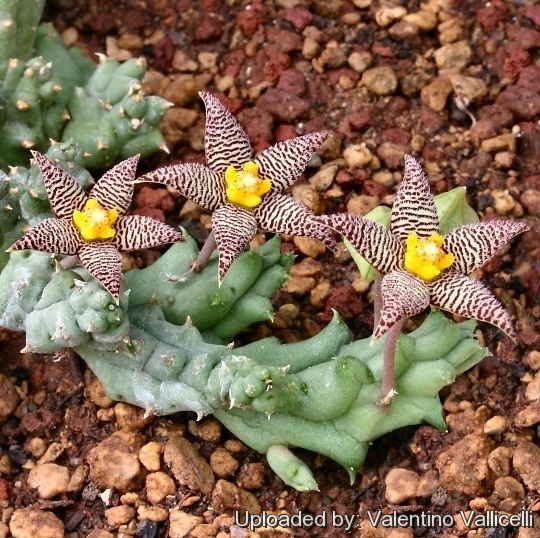
Podanthes geminata (Piaranthus geminatus) Photo by: Valentino Vallicelli
Flowers are five-pointed fleshy stars varying from whitish, yellowish, reddish or bright brown, with or without brown-red dots or transverse lines sometime condensed to a more or less plain colouration. It is very variable.
Origin and Habitat: South Africa, Eastern and Western Cape Provinces.
Synonyms:
See all synonyms of Piaranthus geminatus
Description: Piaranthus geminatusSN|18033]]SN|18024]] is a clumping and prostrate species that spread over the ground forming large cushions. Flowers are five-pointed fleshy stars varying from whitish, yellowish, reddish or bright brown, with or without brown-red dots or transverse lines sometime condensed to a more or less plain colouration. It is very variable and has received numerous unnecessary names of no botanical value, representing no more than local phenotypes.
Stems: Procumbent, decumbent or ascending 1-6 (or under cultivation up to 15) cm long, 12-18(-25) mm thick, divided in short squat ovoid or cylindrical articles obtuse to obscurely 4-(5-)angled, with 2-4 minute teeth 1 mm hight, along each angle. Surface glabrous, smooth or slightly rough, light-green tips faintly purple.
Flowers: 1 to 3 (rarely more) in a short inflorescence at the tips of the stems. Pedicels (2-)6-12(-20) mm long, x 1-2 mm in diameter, glabrous. Sepals 2-4 mm long, ovate or ovate-lanceolate, acuminate, glabrous. Corolla about 13 mm to 42 mm in diameter, star-shaped, without a tube valerian scented with fruity component, more or less pubescent. Corolla-lobes widely spreading, 10-14 mm long, about 4-5 mm broad at the base, lanceolate or gradually tapering to the acute apex, with revolute margins, glabrous on the back, and velvety all over the inner face, more or less hairy; Hairs 0.1-0-9 mm, conical, white, brown or purple, basal margins of the lobes not ciliateor very rarely with clavate hairs. Lobes colour varying from whitish, yellowish, greenish-yellow reddish or bright brown, with or without brown-red dots or transverse lines (sometime condensed to a more or less plain colouration) margin recurved. Corona 2.5-3.2 tall, 3.2-6.5 mm wide, usually yellow and unspotted. Corona-lobes about 1-2 mm x 0.5-1.2 mm, linear-lanceolate or narrowly-oblong, acute or slightly toothed at the apex, closely incumbent upon the backs of the anthers and shortly exceeding them but not connivent-erect, dorsally produced at the base into a spreading crest entire or minutely subdenticulate at the dorsal margin, flat or nearly so and not tuberculate on the top, the entire corona appearing (viewed from above) like a star with 5 short rounded lobes connected at the base, yellow. Pollinia 0.4-0.65 by 0.25-0.4 mm.
Blooming season: Produces numerous flowers simultaneously in October.
Fruits (paired follicles): 6-13 cm long.
Seeds: 3.5-4.5 long, 2-3 mm thick.
Taxonomy remarks: The genus Piaranthus is a very confusing complex of extremely nearly related species with many intermediary forms growing together in many widespread localities and they are very difficult to distinguish. Also experienced botanist found difficulty to separate and classify reliably the various species and forms.
In particular Piaranthus geminatusSN|18032]]SN|18024]] var. geminatus is a very variable species which now also includes the former species Piaranthus globosusSN|18037]]SN|18037]], Piaranthus disparilisSN|18024]]SN|18032]], and Piaranthus pillansiiSN|18024]]SN|18033]].
Subspecies, varieties, forms and cultivars of plants belonging to the Piaranthus geminatus group
 Piaranthus barrydalensis Meve: flowers whitish to yellowish with brown-red dots or transverse lines margin recurved. Corona yellow, and red. Distribution: Barrydale in the Little Karoo
Piaranthus barrydalensis Meve: flowers whitish to yellowish with brown-red dots or transverse lines margin recurved. Corona yellow, and red. Distribution: Barrydale in the Little Karoo Piaranthus disparilis N.E.Br.: has smaller corolla-lobes and different markings on the corolla. The crest of the corona-lobes is distinctly toothed, not merely minutely tuberculate. Distribution: Cape Province (Central region Laingsburg Div.)
Piaranthus disparilis N.E.Br.: has smaller corolla-lobes and different markings on the corolla. The crest of the corona-lobes is distinctly toothed, not merely minutely tuberculate. Distribution: Cape Province (Central region Laingsburg Div.)  Piaranthus geminatus (Masson) N.E.Br.: Flowers 13-42 mm in diameter, star-shaped, more or less pubescent, whitish, yellowish, reddish or bright brown, with or without brown-red dots or transverse lines. Corona yellow, unspotted.
Piaranthus geminatus (Masson) N.E.Br.: Flowers 13-42 mm in diameter, star-shaped, more or less pubescent, whitish, yellowish, reddish or bright brown, with or without brown-red dots or transverse lines. Corona yellow, unspotted.  Piaranthus geminatus subs. decorus (Masson) Bruyns: flowers green-yellow with dark red-brown, patches or bands and densely velvety-hairy. inner corona lobes incumbent on the anthers with large and deeply furrowed crests. Distribution: Northern Cape, Western Cape.
Piaranthus geminatus subs. decorus (Masson) Bruyns: flowers green-yellow with dark red-brown, patches or bands and densely velvety-hairy. inner corona lobes incumbent on the anthers with large and deeply furrowed crests. Distribution: Northern Cape, Western Cape. Piaranthus geminatus var. foetidus (N.E.Br.) Meve: Flowers 18 mm to 30 mm in diameter, star-shaped, pubescent, and velvety ivory, to sand coloured, with brown-red dots or transverse lines. Corona yellow to orange.
Piaranthus geminatus var. foetidus (N.E.Br.) Meve: Flowers 18 mm to 30 mm in diameter, star-shaped, pubescent, and velvety ivory, to sand coloured, with brown-red dots or transverse lines. Corona yellow to orange. Piaranthus globosus A.C.White & B.Sloane: The name is due to the stem segments that are ovoid or globose, light green and resemble a mass of tiny potatoes.
Piaranthus globosus A.C.White & B.Sloane: The name is due to the stem segments that are ovoid or globose, light green and resemble a mass of tiny potatoes. Piaranthus pillansii N.E.Br.: flowers 3-4 cm wide, typically greenish yellow, pale yellow or very pale-reddish, without (or with very fine) red spots. Corona yellowish-green.
Piaranthus pillansii N.E.Br.: flowers 3-4 cm wide, typically greenish yellow, pale yellow or very pale-reddish, without (or with very fine) red spots. Corona yellowish-green.- Piaranthus pillansii var. fuscatus N.E.Br.: lobes broad, lanceolate, acuminate, dark purple (or dark crimson?) with very numerous slender irregular transverse and labyrinthine greenish-yellow lines and markings.
- Piaranthus pillansii var. incostans N.E.Br.: lobes densely dotted or transversely marked with light purple on an ochreous ground, sometimes so minutely as to look light pinkish-brown.
Notes: Pollination:
This plat are pollinated by flies (myiophilous pollination). Fly are attracted by olfactory stimuli, imitating dung or decaying organic (zoogenic or phytogenic) matter, together with mimetic colouration and, sometimes mimetic sculpturing. Nectar is present. The nectar mainly serves as optical attractant causing brilliance effects, and as visitor guide. However, nectar obviously is also a reward. In the pollination process flies carry pollinaria only at the distal parts of their proboscis, never on their legs. The pollinator spectra are similiar between of flowers in habitat and cultivated ones.
Bibliography: Major references and further lectures
1) Werner Rauh “The Wonderful World of Succulents: Cultivation and Description of Selected Succulent Plants Other Than Cacti” Smithsonian Institution Press, 1984
2) Hermann Jacobsen “A handbook of succulent plants: descriptions, synonyms, and cultural details for succulents other than Cactaceae” Volume 1 Blandford Press, 1960
3) James Cullen, Sabina G. Knees, H. Suzanne Cubey “The European Garden Flora Flowering Plants: A Manual for the Identification of Plants Cultivated in Europe, Both Out-of-Doors and Under Glass” Cambridge University Press, 11/ago/2011
4) Doreen Court “Succulent Flora of Southern Africa” CRC Press, 01/giu/2000
8) Focke Albers, Ulrich Meve "Illustrated Handbook of Succulent Plants: Asclepiadaceae: Asclepiadaceae," Volume 4 Springer, 2002
9) Alain Campbell White, Boyd L. Sloane "The Stapelieae: an introduction to the study of this tribe of Asclepiadaceae" S. E. Haselton, printer, 1933
10) John Robert Brown "Unusual Plants: 110 Spectacular Photographs of Succulents" Abbey Garden Press, 1954
11) N. E. Brown. "Flora Capensis", Vol 4, page 518, 1909.
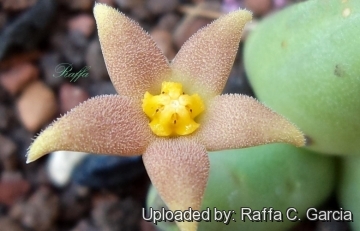 Podanthes geminata (Piaranthus geminatus) Photo by: Raffa C. Garcia
Podanthes geminata (Piaranthus geminatus) Photo by: Raffa C. Garcia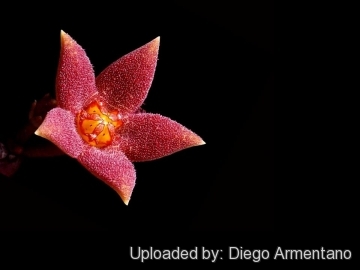 Podanthes geminata (Piaranthus geminatus) Photo by: Diego Armentano
Podanthes geminata (Piaranthus geminatus) Photo by: Diego Armentano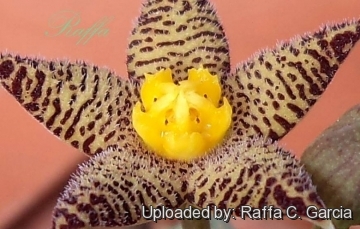 Podanthes geminata (Piaranthus geminatus) Photo by: Raffa C. Garcia
Podanthes geminata (Piaranthus geminatus) Photo by: Raffa C. Garcia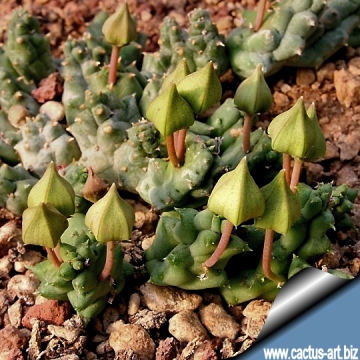 Podanthes geminata (Piaranthus geminatus) Photo by: Cactus Art
Podanthes geminata (Piaranthus geminatus) Photo by: Cactus Art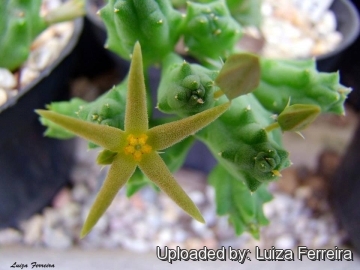 Podanthes geminata (Piaranthus geminatus) Photo by: Luiza Ferreira
Podanthes geminata (Piaranthus geminatus) Photo by: Luiza Ferreira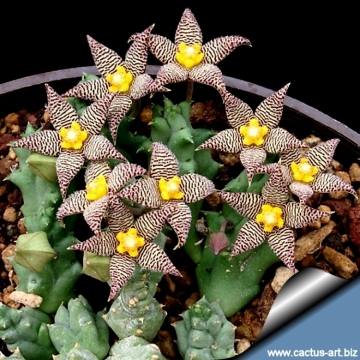 Podanthes geminata (Piaranthus geminatus) Photo by: Cactus Art
Podanthes geminata (Piaranthus geminatus) Photo by: Cactus Art Podanthes geminata (Piaranthus geminatus) Photo by: Cactus Art
Podanthes geminata (Piaranthus geminatus) Photo by: Cactus Art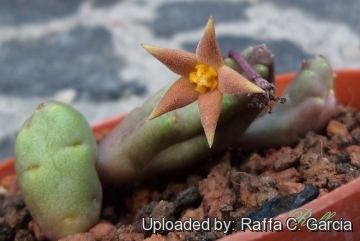 Podanthes geminata (Piaranthus geminatus) Photo by: Raffa C. Garcia
Podanthes geminata (Piaranthus geminatus) Photo by: Raffa C. GarciaCultivation and Propagation: It is an easy blooming plant when mature that require moderately watering through the growing season but enjoy plenty of water and some fertiliser in hot weather, this helps them to flower freely. Water more sparingly in winter according to temperatures. But, as with most asclepiads, it is unwise to leave them wet in cold weather. Winter care presents no problems at 5°C with plenty of light. Since roots are quite shallow, use a cactus mix or add extra perlite or pumice to regular soil potting soil. A gritty, very free-draining compost is suitable, and clay pots help the plants to dry out between watering.
Sun Exposure: Partial sun or light shade
Pest and diseases: Stapelia species vary in their susceptibility to rotting, but are generally fairly easy to grow, especially if kept pest-free. They are very susceptible to stem and root mealy bugs, and damage from these may well initiate fungal attack. If you do have problems with a stem or with basal rotting, you can reliably isolate the healthy parts, dry them off, and re-root them in moist compost.
Cultural Practices: Re-pot every 2 years
Propagation: Easiest with stem cuttings. Allow cuttings to dry a day before planting. Stems must be laid (Not buried) on gritty compost and will then root from the underside of the stems. It can also be increased from seeds sowing in spring in moist, sandy peat moss.
Potting medium: Since roots are quite shallow, use a cactus mix or add extra perlite or pumice to regular soil potting soil. A gritty, very free-draining compost is suitable, and clay pots help the plants to dry out between watering.


















